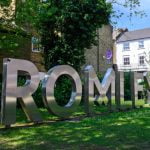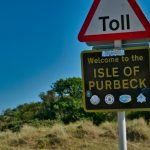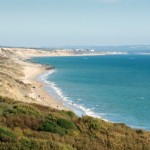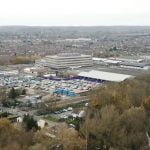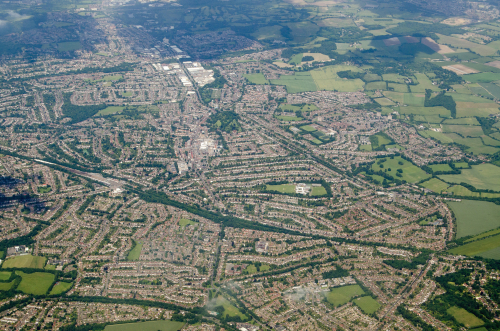
A quick guide to the Borough of Bromley
Overview
The London Borough of Bromley is situated on the outer edge of southeast London. The present borough of Bromley was established in 1965 by the merger of the former boroughs of Beckenham and Bromley and the urban districts of Orpington, Penge, and parts of Chislehurst and Sidcup. The borough shares borders with the London Boroughs of Lewisham and Greenwich to the north, Bexley to the northeast, Southwark and Lambeth to the northwest, and Croydon to the west. It also borders the district of Sevenoaks to the east and south, and the district of Tandridge to the southwest. Bromley is the largest of all 32 London Boroughs, having an area of more than 150 sq. km. At the time of the 2011 UK Census, Bromley had a population of 309,392.
A Very Brief History
The Romans are thought to have been the first to settle the village of Bromley area when they built an encampment at Keston. A natural spring situated in the area, the source of the River Ravensbourne, is still known as Caesar’s Well. A Roman villa was also built at Orpington around AD 140, which remained occupied up to AD 400. After the Roman era, which ended in the early 5th century, an Anglo-Saxon settlement began to develop around the present-day market square area of Bromley. The name Bromley has Anglo-Saxon origins, first recorded in AD 862 as Bromleag, when the village of Bromley first received a charter. Bromley translates from Old English as ‘the place where broom grows’.
In the 10th century, the Bishop of Rochester established the Manor of Bromley, as a base for visits to London. The last Bishop’s Palace was built in 1775, and the last bishop based in Bromley, moved out in 1845. The old palace now forms part of the extensive Bromley Civic Centre.
In 1032, Eadsy, chaplain to King Cnut, gave his estate at Orpedingetune to Christ Church Priory at Canterbury. In 1270, a wooden priory was built on the donated land and the first Rector of Orpington, Hugh de Mortimer, took up residence. In 1290, the house was rebuilt in stone, extended in 1393, and extended again in 1471. In the 17th century, the house ceased to be a rectory and passed into private ownership. In 1947, the house was acquired by Orpington Urban District Council, and utilised as a museum and library, but closed in September 2015. The building was then sold to private enterprise, who will be reopening it soon as artist studios and office space. However, the Grade II listed Priory Gardens designed by the last private owners is still open to the general public.
In 1609, Camden Place was built at Chislehurst for the antiquarian William Camden. However, it’s now more famous for being the home of France’s exiled Napoleon III and his Empress Eugénie, who lived there during the early 1870s. A memorial cross on Chislehurst Common is dedicated to their son, Louis Bonaparte, who was killed in the Zulu War (1879), while serving in the British army.
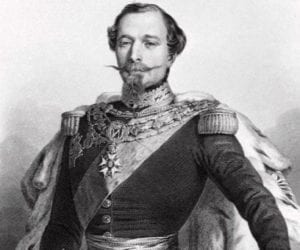
The exiled Napoleon III of France lived in Chiselhurst from 1871 to his death in 1873
Other notable former residents of the borough include William Pitt the Elder, who came to live in Bromley in 1754 when he bought Hayes Place, subsequently rebuilding it. William Pitt the Younger was born there in 1759. The building was demolished in 1933, to make way for improvements to local infrastructure. From 1842, until his death in 1882, The world-renowned naturalist Charles Darwin lived at Down House in the village of Downe. It was there, that he wrote his momentous book ‘The Origin of Species’, the work that gave rise to the theory of evolution. The celebrated author H.G. Wells was also born in Bromley in 1866.
In 1854, the ‘Crystal Palace’, a huge steel-and-glass exhibition hall, was relocated from its original site in Hyde Park, where it had been built for the Great Exhibition of 1851, to Sydenham Hill. Sadly, the building was destroyed by fire in 1936. Today, the grounds house a sports and recreation centre and concert bowl, which was opened in 1964.
In 1858, the railway came to Shortlands, close to the market town of Bromley, which subsequently became a fast-growing residential area, following the growth of the rail network across London. The evolution of the railway system turned the northern half of the borough into a commuter suburb of London, whilst most of the southern half, even to this day, remains as open countryside.
During World War II, Biggin Hill Aerodrome, at the south end of the borough, was selected as the base to house the RAF’s Fighter Command, which was tasked with defending London. It has since become a civil airport, extensively used by private aircraft and for flying displays, as well as a major source of employment.
Famous People
Some famous people who were either born or have lived within current boundaries of the Borough of Bromley, are:
- David Bowie (1947–2016), musician and singer, moved to Bromley as a child in 1953
- Enid Blyton (1897 – 1968), worldwide best-selling children’s author, lived in Shortlands Road, Bromley
- Malcolm Campbell (1885–1948), Grand Prix racing driver, born in Chislehurst
- Richmal Crompton (1890–1969), authored the Just William stories for children; lived at Oakley Road, Bromley Common
- Charles Darwin (1809–1882), naturalist, known for his theory of evolution, lived in Downe, Bromley
- Eugénie de Montijo (1826–1920), the last Empress of France, lived in exile with her husband Napoleon III at Camden Place in Chislehurst
- Napoleon III (1808–1873), the last Emperor of France, lived and died in exile at Camden Place in Chislehurst
- William Pitt the Elder, Earl of Chatham (1708–1778), statesman, lived and died at Hayes Place, a former house in Hayes
- William Pitt the Younger (1759–1806), statesman and Prime Minister, born in his father’s house in Hayes
- H. G. Wells (1866–1946), acclaimed and prolific author, best known for his works of science fiction, born in Atlas House, 47 High Street, Bromley
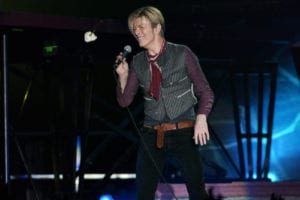
Legendary musician, singer and songwriter David Bowie lived Bromley as a child
Getting around!
Rail
Bromley is one of only six London Boroughs that does not have any Underground stations within its boundaries. However, the borough does have a great many railway stations, as it is served by the London Overground, London Trams (Tramlink) and the national rail network. National trains are operated by Southeastern and Southern, while London Trams serves the west of the borough, linking to Croydon and Wimbledon.
London Overground Stations (also served by Southern):
- Anerley
- Crystal Palace
- Penge West
National Rail Stations:
- Birkbeck
- Beckenham Junction
- Shortlands
- Bromley North
- Bromley South
- St Mary Cray
- Sundridge Park
- Ravensbourne
- Bickley
- Elmstead Woods
- Chislehurst
- Petts Wood
- Orpington
- Chelsfield
- Knockholt
- Kent House
- Penge East
- Lower Sydenham
- New Beckenham
- Clock House
- Elmers End
- Eden Park
- West Wickham
- Hayes
Tramlink Stations:
- Beckenham Junction
- Beckenham Road
- Avenue Road
- Birkbeck
- Elmers End
Cycling
The borough has more than 100 miles (160 km) of cycle routes, with some off road through the likes of Jubilee Park and along Waterlink Way. The local council produces detailed maps of local cycle routes that can be picked up from libraries and bike shops across the borough.
Things to see and do!
Parks and open spaces
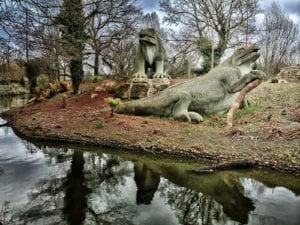
Crystal Palace Park has a 19th-century dinosaur trail
- Crystal Palace Park – Large green space with dinosaur trail
- High Elms Country Park – Spacious park with nature trails & golf course
- Kelsey Park – Parkland with gardens, playground & cafe
- Scadbury Park – 300-acre reserve with wildlife trails
- Sevenoaks Wildlife Reserve – Bird-watching centre with nature trails & exhibition centre
- Darent Valley Path – 19 miles-long path following the River Darent from the River Thames at Dartford through the Kent Downs
- Hayes Common – A walking area with woodland & heath
- Cator Park – Park with a playground & tennis courts
Tourist Attractions
- Chislehurst Caves – Mazed network of centuries-old man-made tunnels, with guided tours
- Queens Gardens – Small ornamental Victorin gardens
- Down House – Home of Charles Darwin
- Crystal Palace Dinosaurs – Collection of life-size dinosaur statues from the Victorian era
- Bethlem Museum of the Mind – Museum and art gallery
- Crystal Palace Museum – Traces the history of the famous building
- Danson House – 1766 Georgian mansion & surrounding Danson Park. Public tours are offered weekly
- Biggin Hill Memorial Museum – Tells the story of Britain’s most famous air fighter station of WWII
- Crofton Roman villa – Excavated remains of a Roman villa with an on-site museum
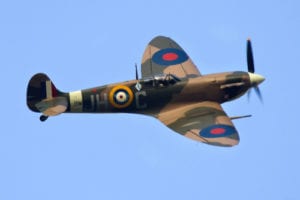
The Biggin Hill Heritage Hangar has a restoration facility which restores Spitfires to airworthy condition
Where to stay?
There are a few hostels in Bromley that either offer shared facilities or are dormitory accommodation. However, there’s plenty of B & B/Guesthouse/Basic Hotels style accommodation on offer. If you’re looking for a bit more luxury then there’s also plenty 3, 4 and 5-star hotel style accommodation on offer. Accommodation costs are generally quite favourable when compared to most of the rest of London. An alternative to a hotel would be to rent an apartment – most have no minimum let period. While the majority of apartments cater to couples, some can accommodate up to 6 people. Indicative prices for the most readily available types of accommodation/per night, based on 2 adults sharing, unless otherwise indicated, are as follows:
Hostel: £20 – £45 (1 or 2 people)
B & B/Guesthouse/Basic Hotel: £45 – £100
3/4/5 Star Hotel: £100 – £250
Apartments vary greatly based on no. of available berths, location and standard
If you enjoyed this London guide, check out some of our other London guides by clicking the link below.
